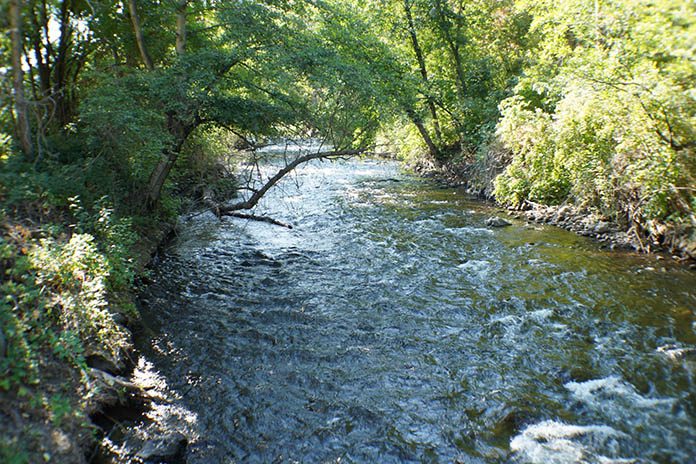
The Confederated Tribes of the Umatilla Indian Reservation (CTUIR) has received nearly $2 million in federal funds for a project to prevent pollution and reduce toxicants in four Columbia River tributaries.
The CTUIR has received a 2023 U.S. Environmental Protection Agency tribal grant in the amount of $1,990,990 for its Strategic Pollution Prevention and Toxics Reduction Planning and Implementation Project. The plan will target toxicants reduction actions in the Umatilla, Walla Walla, Snake and John Day tributaries to the Columbia River.
Mason K. Murphy, CTUIR Energy and Environmental Sciences Program manager, said toxicants are manmade chemicals that are toxic whereas toxins are natural-occurring substances that are toxic. He said the CTUIR uses toxics in the plan name to represent “toxic substances” and to include other pollutants that are not classified as toxicants.
“From our water code: Water keeps all our bodies for us. Čúuš is a part of everything. It is within natítayt (the people), it is within tiičám (the land), and it is within núsux (the salmon). It is essential for the survival of all life. Cold, clean, healthy water is the life blood of the land. This funding is an important step toward protecting cold clean water,” Murphy said.
According to the EPA, a comprehensive inventory of toxicants will prioritize reduction actions. The project will focus on toxicants and their impact on human health and First Foods such as salmon, mussels, lamprey, resident fish, deer, elk, bitterroot, celery, huckleberry and choke cherry, which are a critical component of CTUIR tribal member diets and depend on a healthy and functioning river and floodplain.
Murphy said the CTUIR has received the grant and is hiring toxicology staff to implement the work. The project will take six years and funds will be spent across that period.
“The funds will be used to develop a toxics (toxicants/toxic substances) release inventory to understand what toxicants and how many are entering our rivers form various sources and a toxicant reduction plan to strategically prioritize and reduce those toxicants getting to the waterways,” he said.
The grant money stems from the EPA investing $31.7 million across seven Oregon projects and programs to reduce toxicants in fish and water, address climate chaos and help restore the health of the Columbia River Basin.
The federal investment come from the Bipartisan Infrastructure Law’s $79 million total funding infusion into the Columbia River Basin Restoration Program, which is proving essential to the Pacific Northwest’s tribes, communities and economy that rely on the critical watershed.
“Our rivers and waterways are the lifeblood of our communities. If they are dirty and polluted, our homes, schools, and businesses are dirty and polluted,” U.S. Sen. Jeff Merkley said. “The federal investments for these homegrown projects and programs will drive solutions that lead to a cleaner, healthier Columbia River Basin for our communities, wildlife, ecosystems, and economy.”
U.S. Sen. Ron Wyden said the Columbia River Basin is a rich and essential part of Oregon’s history, as well an integral part of our present and future.
“Clean water is a key ingredient for thriving and healthy communities in the basin,” he said. “And I will continue to fight for federal resources just like these that protect this precious natural asset for generations to come.”
According to the EPA, toxic pollutants can accumulate in water, sediment and fish tissues. This threatens to decimate natural ecosystems and risk the health of tribal communities and other Oregonians who consume affected fish populations.









